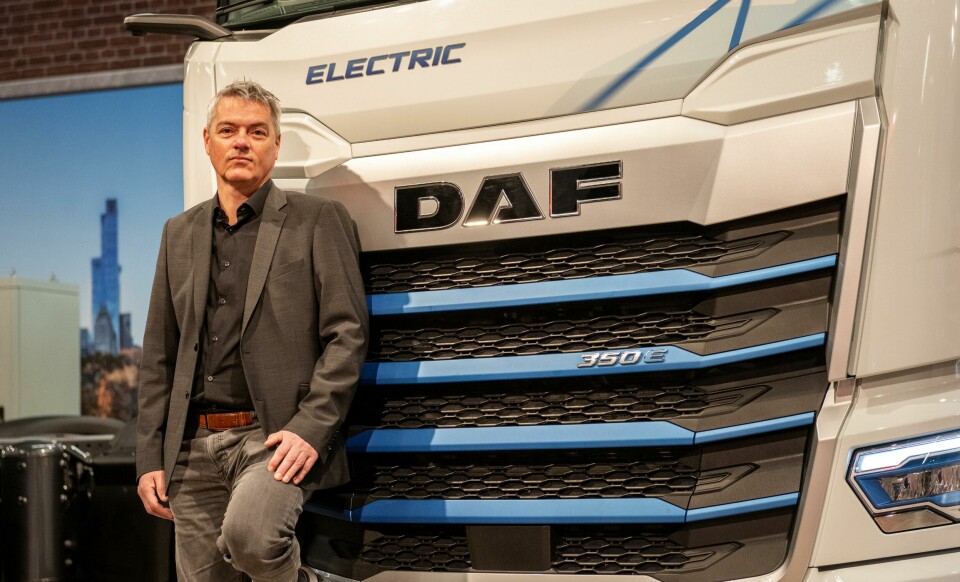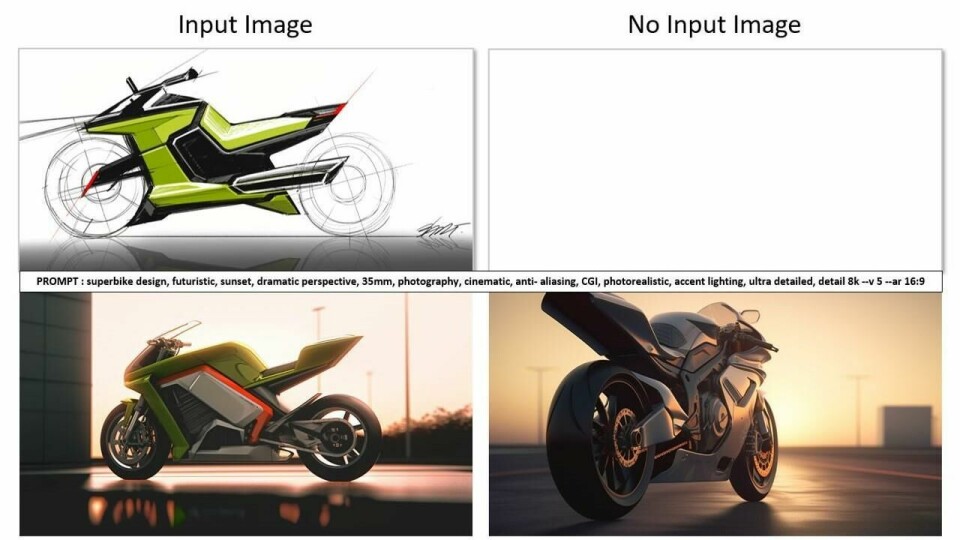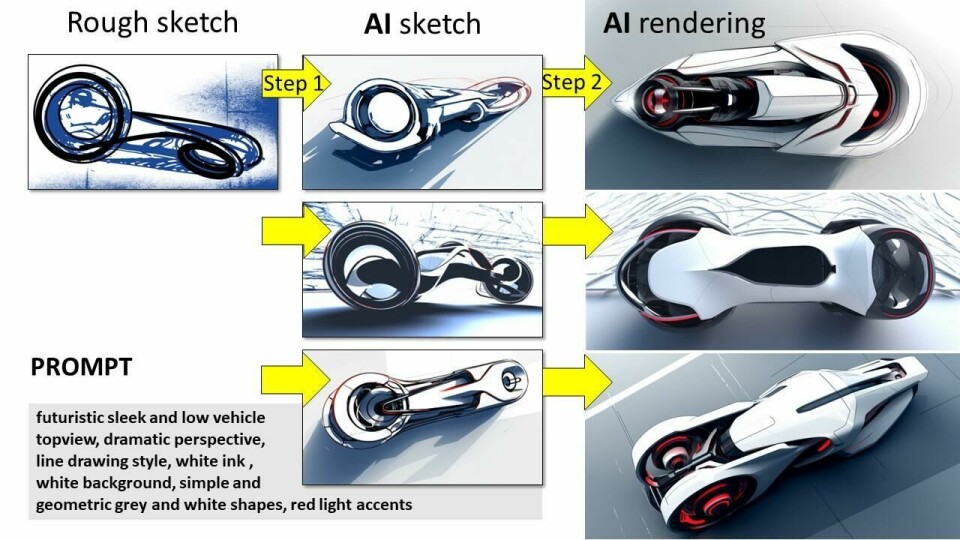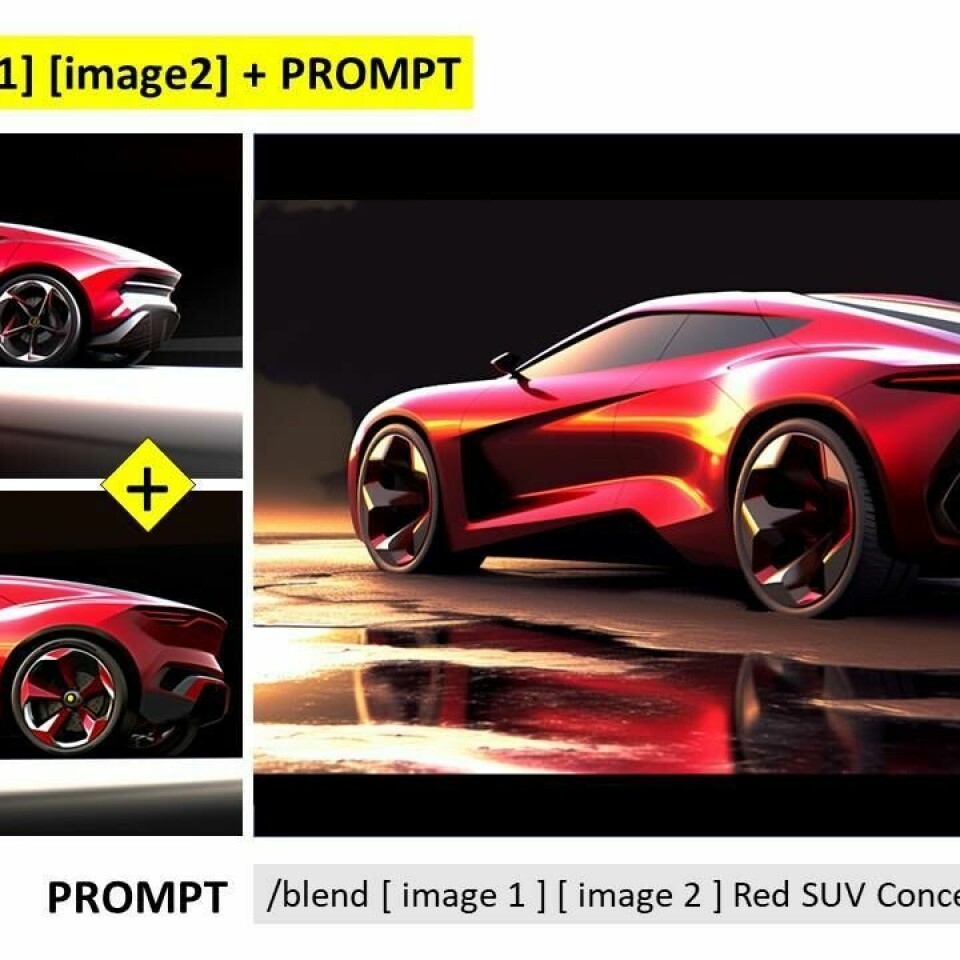
“The right tool at the right moment”: Bart van Lotringen of DAF Trucks
The design director of DAF Trucks, Bart van Lotringen, speaks with Car Design News about his teams’ use of digital tools, AI, and the future
As we began organising the month’s February Focus, we queried many designers and educators about the uses Digital Tools in the design studio.
We got many fine responses, but Bart van Lotringen, of DAF Trucks sent back an exceptionally detailed response. Here is a transcript of our survey/interview, lightly edited for clarity:
Car Design News: How have digital tools impacted your workflow at DAF?
Bart van Lotringen: Digital design has helped us to increase our design speed, increase volume of design work (do more with less people), be more flexible and maintain the design intent when going into the engineering phase. Virtual Reality has been adopted heavily since the Pandemic, we could not have done without it and it has replaced much physical modelling due to its speed, flexibility to work until the last minute and the exchange with the design studios of Peterbilt and Kenworth on global synergy projects. We do not need to ship models anymore, our VR-tools are standardised globally. After initial hesitance our management now feels reasonably comfortable with making design decisions by using VR. At some point we do make physical hardcopies for final styling approval but not as many anymore.
CDN: What is your “go-to” software for truck design? What are the ways it helps you achieve your goals?
BvL: In our studio we use multiple programs, depending on the task that needs to be done:
- 2D: Adobe Photoshop, Adobe Illustrator, Corel Painter
- 3D: Autodesk Alias, Blender, Creo, NX, Sub-d modelling.
- Animation/CGI: Autodesk VRED, Keyshot, Adobe After Effects
- UI Design: Adobe Photoshop, Adobe Illustrator, Adobe After Effects, Figma, ProtoPie
- Virtual Reality: Autodesk Vred, plug-in Alias
When selecting the software it depends on the preference and experience of the designer, the way it fits into the individual and total workflow of the company. Alignment with other disciplines like marketing, communications, engineering and aerodynamics is also essential. Hand-over of data to other disciplines and other design studios in the PACCAR group are just as important criteria as the internal workflow in the design dept. We want to avoid laborious rework.
CDN: What are greatest strengths of digital tools, what are their weaknesses?
BvL: You must select the right tool at the right moment. Blender or Sub-D modelling is good for ideation and understanding form, but for the exchange to other departments it is limited. You need to rebuild everything farther downstream. Designers at DAF are well experienced with Alias, and ultimately it is faster to go directly into Alias and by-passing polygon modelling due to the good CAD exchange with other departmentss. With 3D files from Alias other disciplines can work immediately, without issues.
For 2D work we do not enforce a tool upon a designer. Whatever works best for him or her, we let them work like they want to and have honed their own workflow. Some designers use Illustrator as the curves can be brought into Alias easily, and do not need to be traced by a digital modeler. But working from Photoshop or Painter into 3D with image planes is also fine.
3D work: Alias is our core tool for designing trucks, but for modelling frames, milling and other work we also use other programs that are more suited. A young designer might use Blender, but most designers are very proficient in Alias to express themselves in 3D. To avoid that a designer spends too much time in nitty-gritty 3D modelling we have good digital modellers that only need a sketch to make a good interpretation into a 3D model.
The aim is also to quickly be able to do early testing in real driving vehicles and realistic situations, without the lead time for series-like coding
Animation: Autodesk Vred is the main tool, but usually in combination with After Effects. We use whatever possibility that is available to get the desired effect.
UI design: Adobe Suite in combination with Figma and ProtoPie is the main tool. Important here is the workflow further downstream, so that we get no misunderstanding with the internal and external software developers in what the pixel-perfect screens and interaction should be like.
We are working on integrating VR into this toolset, so that we can do early validation with drivers on new UI-concepts, without doing elaborate coding. The aim is also to quickly be able to do early testing in real driving vehicles and realistic situations, without the lead time for series-like coding.

CDN: And for virtual reality?
BvL: We use Autodesk Vred for virtual reality and CGI. This toolset is standardised globally, so that we can quickly exchange datasets and scenes with our colleagues of Kenworth and Peterbilt, without the need for travel of models and people. A negative point is the interaction between people in the scene.
We can have scenes with max 6 people simultaneous in it, but usually do a script and a moderator to lead the viewers through the scene. Otherwise it becomes very chaotic and difficult to draw conclusions after a styling review. It is standard combined with a physical LED screen where other (non-VR) viewers can see what the VR-viewer sees. It has by-passed many of the scale models that we used to make.
We used to do virtual reality, but more and more we use augmented reality. Particularly for exteriors we can put the virtual model inside a line-up of physical models and toggle between variants of the designs. That is something that is not possible any other way.
For interiors we combine VR with a 360 photograph of a real-life realistic driving situation, mapped around it. We can combine that with animated objects in the scenes like pedestrians, cyclists and other cars and trucks. The combination of low resolution physical bucks with high resolution VR allows us to move fast and keep momentum in our development decisions.
I have serious concern about the use of cloud-based applications with regard to confidentiality and model rights of the design
CDN: Do you use Artificial Intelligence software, or a software that has an AI component to it (like Photoshop)?
BvL: I have extensively been testing AI for design in Midjourney and Runway, but mainly privately right now and with non-confidential material. I still have a bit of an ambivalent view on it. On one hand I am highly fascinated by it, but also do see the restrictions after my experiments.
I have serious concern about the use of cloud-based applications with regard to confidentiality and model rights of the design. Once it is in the cloud, how can you prevent for it not being copied, after all it is then in a public domain. The solution is to do your own training with local datasets.
Some programs like Vizcom show some sort of possibility like that, but many like Midjourney and Runway adopt a business model where it is in the public domain and I think this hinders widely adoption for industrial businesses. They need to re-think their strategy and make custom tailormade solutions that fit the need of each application.

AI programs like Midjourney and Runway predict the most logical next step, based on sheer computing power and using large datasets for their training. Because of the nature of datasets they are biased and you always need to double check the results. They seem to be mainly trained on sportscars, not on trucks, let alone on European trucks. That makes them useless right now for our business.
In our office we only use the AI component in Photoshop with effective results. It is great for removing artefacts in your images, adding new objects seamlessly and doing things like reflecting an image of a truck in a wet road. You can also enlarge too small images easily or upscale the resolution, using AI.
Photoshop says it does not use customer data for AI training, unlike others. There is a good Youtube film on AI vs Artists : The Biggest Art Heist in History, showing the danger of stealing data from internet without contributing to the creators. Many sites that create images are dominated by AI-generated content, to the point that they are pushing out truly original content.

CDN: Do you see added value with the AI component?
BvL: Yes, I do see the added value. It can do repetitive things faster, accurately and with more variants than you can do yourself. But is needs a moderator, the designer, to make the choices. The designer of the future will be replaced by the designer that uses AI, but we still need designers. I am not afraid of that.
What was pleasantly surprising is that it opens up your field of view. We all have our limitations and conditioning in creativity and it was nice to see variants that you had not even thought up before, but triggered your creativity for new form language.
What is limiting is that it is trained on existing designs and datasets and makes new combinations, but always based on something that is already there. So it is based upon the present and looking rearwards, instead of looking forward to something radically new. How nice would it be to design a bit of unpredictability into it?
CDN: What would your dream software package do for you?
BvL: I am very much intrigued by combining different AI programs. There are pioneers, like architect Arturo Tedeschi, that already do that and that use mathematical programs in combination with image-generating programs. Another area that is very promising is converting an image into 3D data, by using artificial intelligence. This trend could make polygon modelling in automotive completely obsolete. I do not think we are that far away anymore from that point that it becomes feasible and useable.
My ideal program would be that you can take a hand-drawn sketch, turn into an accurate AI-generated image, into an accurate AI-generated 3D model that you can then accurately 3D print. And do all the modifications in-between by giving it your own input in the process along the way.
AI-software for automotive definitely needs to be confidential, based on locally trained datasets, and be customisable to your own needs.



